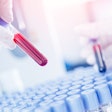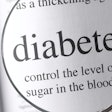
Performing hemoglobin A1c (HbA1c) testing four times a year reduces costs and improves quality of life for individuals with diabetes compared to less frequent testing, according to a study conducted by Primary PartnerCare, a physician network in New York.
Diabetes affects more than 30 million people in the U.S. each year, at an estimated cost of $327 billion in 2017, including $237 billion in direct medical costs. Compared to those without the condition, people with diabetes have two to three times the average amount of medical expenses, according to Primary PartnerCare.
The American Diabetes Association (ADA) recommends hemoglobin A1c testing four times per year, but many primary care physicians scale this back to two times a year if the patient has a "normal" HbA1c test. Primary PartnerCare decided to study patients within its accountable care organization to see how the ADA's guidelines affected physician practice.
The study findings showed a direct correlation between the frequency of HbA1c testing and healthcare costs. The fewer the tests, the higher the hospital admission costs, with those who were tested four times annually incurring costs 43% lower than those who were never tested.
| Hospital admission costs based on No. of HbA1c tests | |||||
| No. of tests | |||||
| 0 | 1 | 2 | 3 | 4 | |
| Hospital admission costs per patient | $4,103.32 | $3,281.67 | $2,870.98 | $2,762.31 | $2,358.37 |
Given the low cost of HbA1c testing -- an average of $11.75 per test -- increasing the frequency of testing is a no-brainer, according to Dr. Harry Jacob, chief medical officer of Primary PartnerCare.
"Increasing the frequency of [hemoglobin] A1c testing for our patients is an obvious win," he said.



















